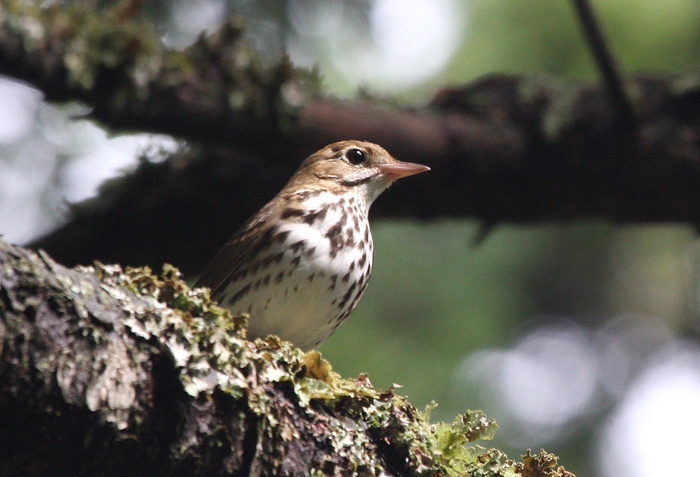Comments:
Well this quiz ended up being a lot harder than I thought it would
be. I think that the hardest part of the quiz was what I wrote in the
introduction “nothing tricky about this one.” A lot more people might
have gotten it correct if I had wrote “this one is a lot trickier than
it looks so BE CAREFUL.” I didn’t mean to trick anybody with that, I
just meant that it wasn’t a shot of the back of the bird like last
month.
Anyway, looking at the photo, it looks like a thrush. Specifically it
looks like one of the Catharus thrushes, in Utah represented by the
Hermit, Swainson’s, or Veery (rare). If the ID of this bird was going
to be decided by votes than it would be a Hermit Thrush winning by a
landslide, with Swainson’s Thrush as a distant second (nobody picked
Veery). Even when I took this photo 1 member of the group who started
yelling “what is this thrush?” The spotted breast & eye-ring both make
you think Hermit or a Swainson’s Thrush, and between those 2 choices
this bird could go either way. But what if it isn’t a thrush after
all?
Look how clear white the breast and belly of this bird is. Not smudgy
gray or brown. Not buffy either. As far down the sides as we can see
it is still bright white. The spots are crisp, dark, and extend as far
down the sides as we can see. Pull out your favorite field guide and
check out the thrushes. They can both be quite variable and both have
several races, but I the books don’t show either species having this
bright white of a breast with this crisp of streaking. I recommend
checking out the photos on the uthabirds.org website. There are good
photos of both species and all of them show some color on the breast
and the spotting fades out the farther down the bird you go,
especially along the sides.
Now let’s look at the face of our bird. It has a large eye-ring, a
white moustache stripe with a dark malar stripe below that. The
thrushes in question both show these characteristics as well to some
degree. But is you compare our bird to the thrushes the eye-ring
appears too large and the white moustache/black malar too obvious.
The bright white under parts, crisp spotting, large & uniform white
eye-ring, and the white & black stripe on the cheek are not what
birders normally use to ID this species, but if that is all you can
see it will work. I photographed this Ovenbird in June, 2010 in Maine.
I recommend taking another look at the photos on the website. Compare
both the thrushes with the Ovenbird photo. It will help show all the
characteristics I am trying to describe.
Thanks to everybody who gave some details about their decisions –
especially those that I put on the spot and asked to take a look at
the quiz or asked why they answered the way they did.
|

